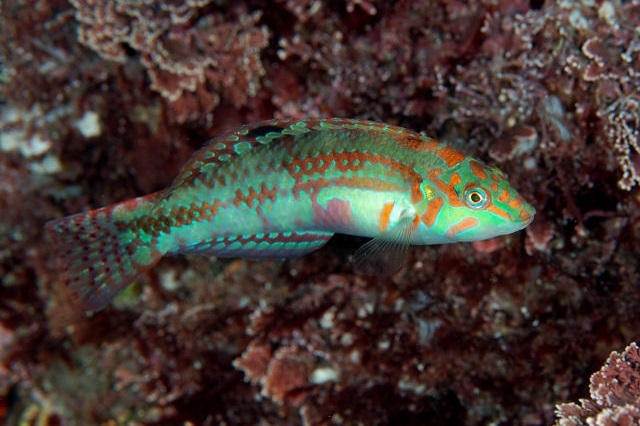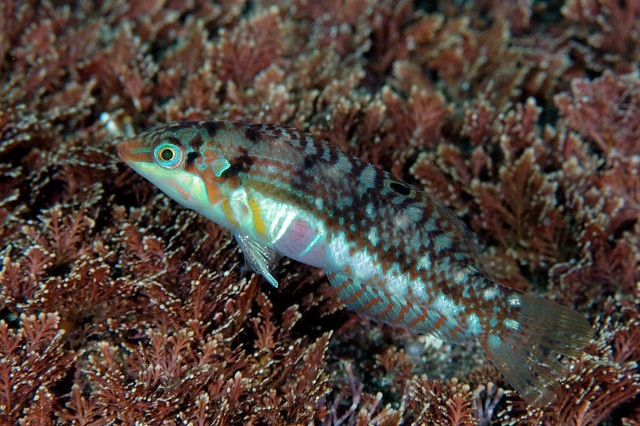Halichoeres nebulosus
| Latin name | Halichoeres nebulosus |
|---|---|
| Local name | Nebulous wrasse |
| Family | Labridae - Halichoeres |
| Origin | East Indian Ocean, West Indian Ocean, Australia, Japan, The Red Sea, Indonesia, Central/West Pacific |
| Max length | 12 cm (4.7") |
| Minimum volume |
300 l (79 gal) |
|---|---|
| Hardiness |
Average |
| Suitable for aquarium |
Suitable with care |
| Reef safe |
Reef safe with caution |
| Aggressiveness | Mostly peaceful but might be aggressive towards similar species |
| Recommended |
Larger crustaceans (Shrimp, crabs...) Other invertebrates Small crustaceans (Krill, mysis, artemia...) Zooplankton (Cyclops, pods...) |
|---|
This species likes to eat tubeworms.
This species is known to jump out of open aquaria.
This species can be a threat towards small crustaceans, e.g. small shrimp.
This species is very sensitive during transportation and acclimatizing into the aquarium.
This species needs a minimum of 2 inch (5 cm) of sand in the aquarium bottom, so it can dig itself down when afraid or needing to sleep.
This species functions best as a pair (one male, one female), or one male with several females.
This species can change gender from female to male.
When a male is needed, a female changes sex and takes on the role.
This species is known to feed on flatworms.
One can, of course be unlucky in having a specimen that refuses to eat them.
This species can be used to combat Pyramid snails.
One can of course be unlucky in having an individual that refuses to eat them.
Fish of the genus Halichoeres are very populair in aquaria, as they are attractive and effective at eradicating flatworms and pyramid snails.
They are generally more peaceful than Pseudocheilinus hexataenia, which are often acquired to the same end. However, most fish of the Halichoeres genus will quickly become too large for smaller aquaria.
There is a difference in which food these fish live on, some on small invertebrates, whilst others can crush various crustaceans. Some species will take prey larger then themselves and smash it against rocks, so be aware of this when one has small fish, crabs, shrimps, snails etc. in the aquarium.
These Wrasses will dig themselves into the sand when feeling threatened or needing to sleep.
When they are choosen at the fish store one must make sure they are not injured during transport, especially in the area around the mouth. If the fish will be long in transit, it is a good idea to have enough sand in the container used so they can bury themselves.
They have an excellent biological clock, but after transportation it takes a bit of time before it start working properly again.
Wrasses are nearly always seen in reef aquaria, since many of the species are both attractive and useful in battling a range of unwanted invertebrates like i.e. flatworms, pyramide snails.
These fish live of everything from zooplankton to large crustaceans, sea urchins and the like.
The needs and behaviour of Wrasses vary greatly, so it is vital to familiarize oneself with the specific species before buying one.
Richard Aspinall. 2014. Aquarium Fish: Halichoeres Wrasses - Are they the best reef fish? - Advanced Aquarist - (English)
Bob Fenner. Genus Halichoeres A-M - Wet Web Media - (English)
Scott W. Michael. 2009. Wrasses and Parrotfishes (Reef Fishes Series Book 5) - TFH Publications / Microcosm Ltd. - (English)



